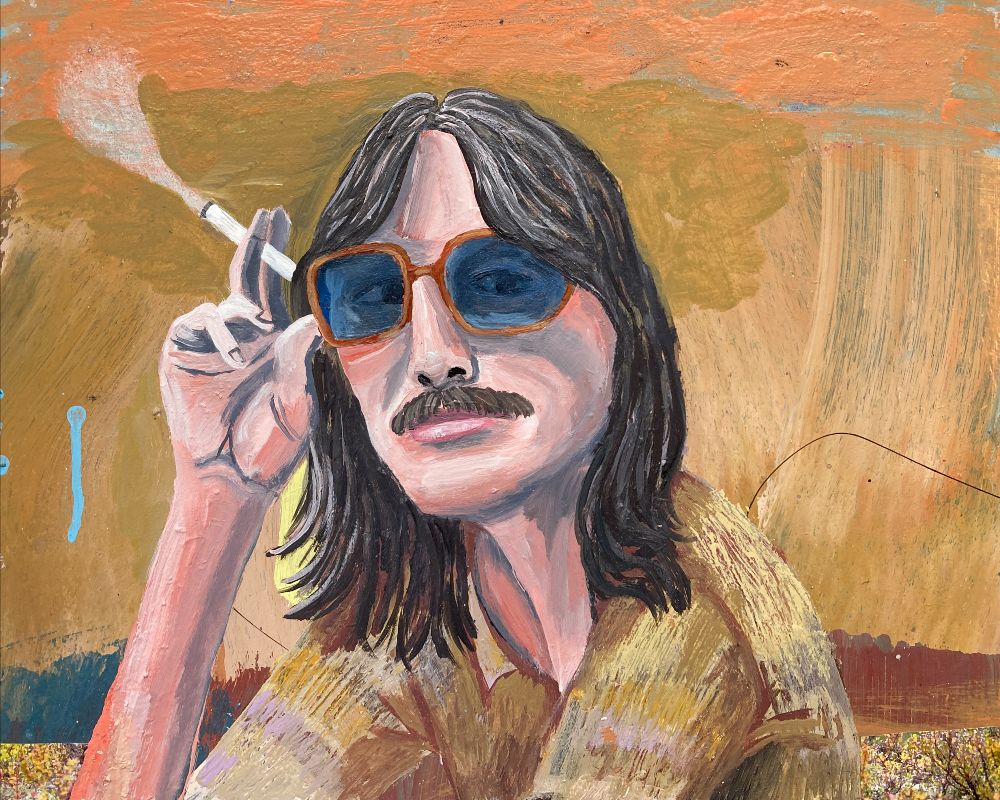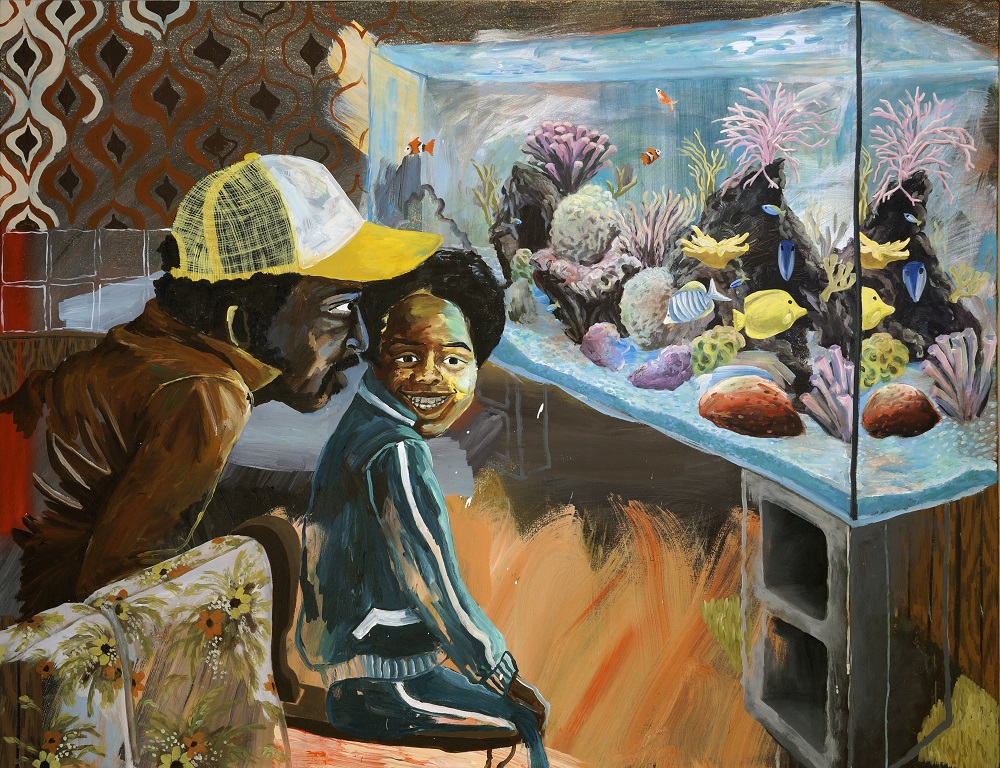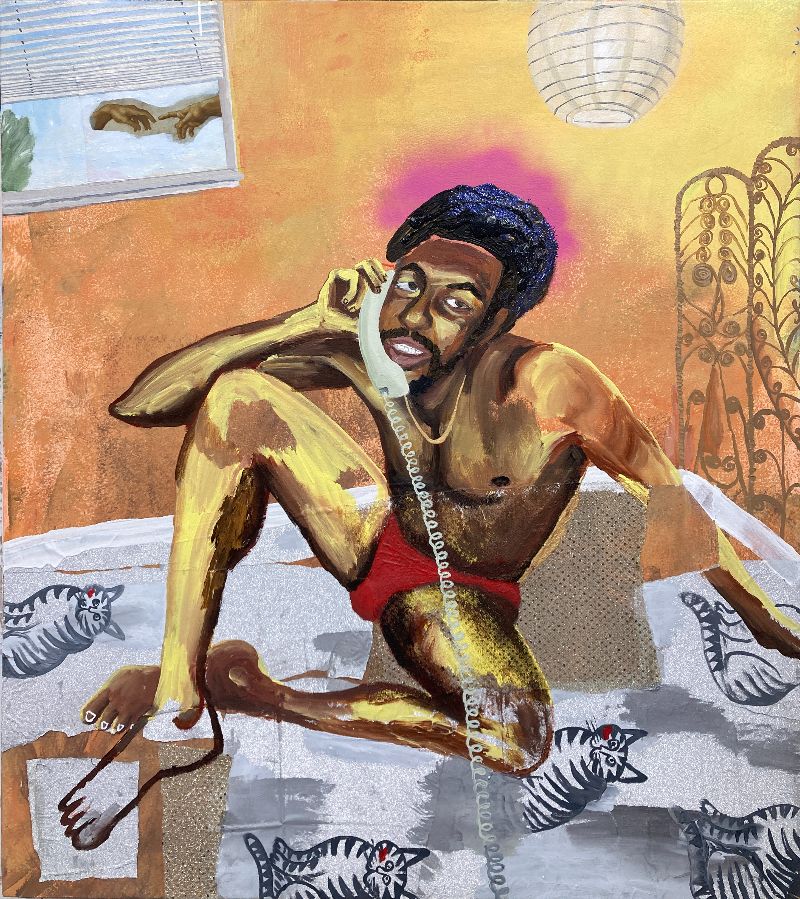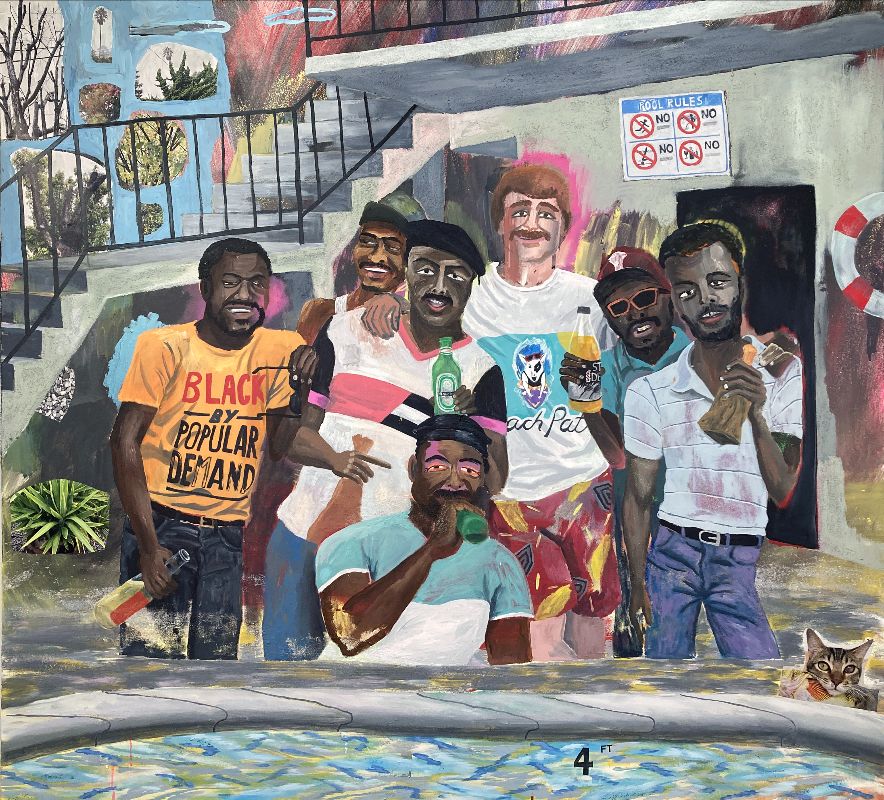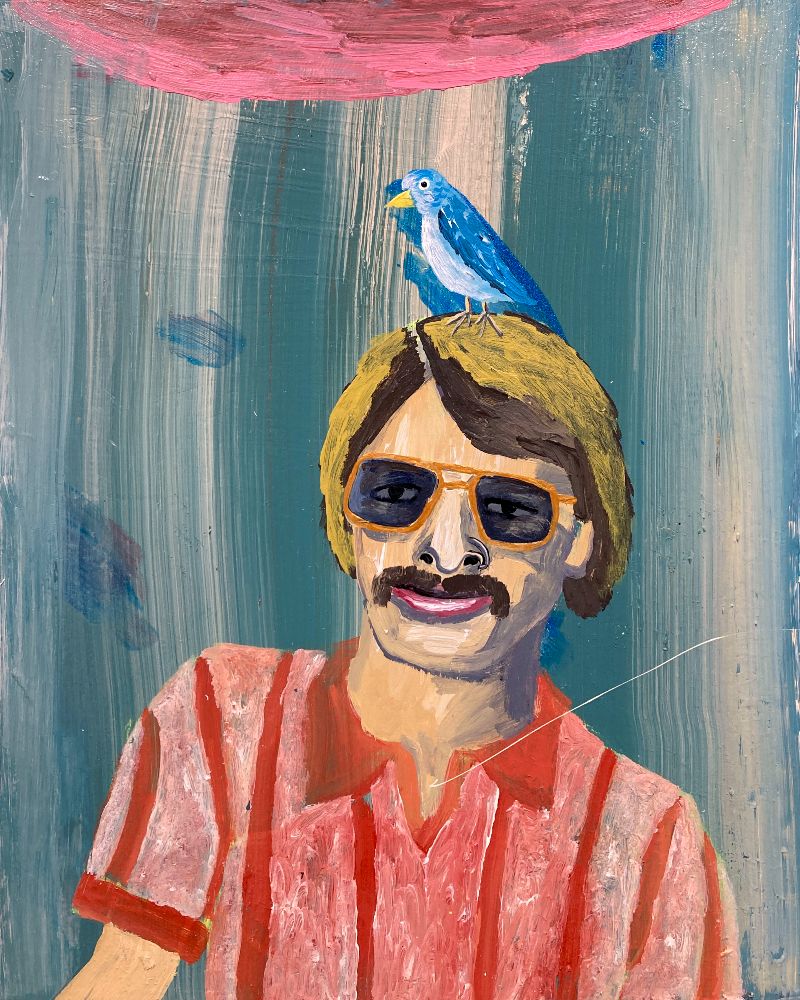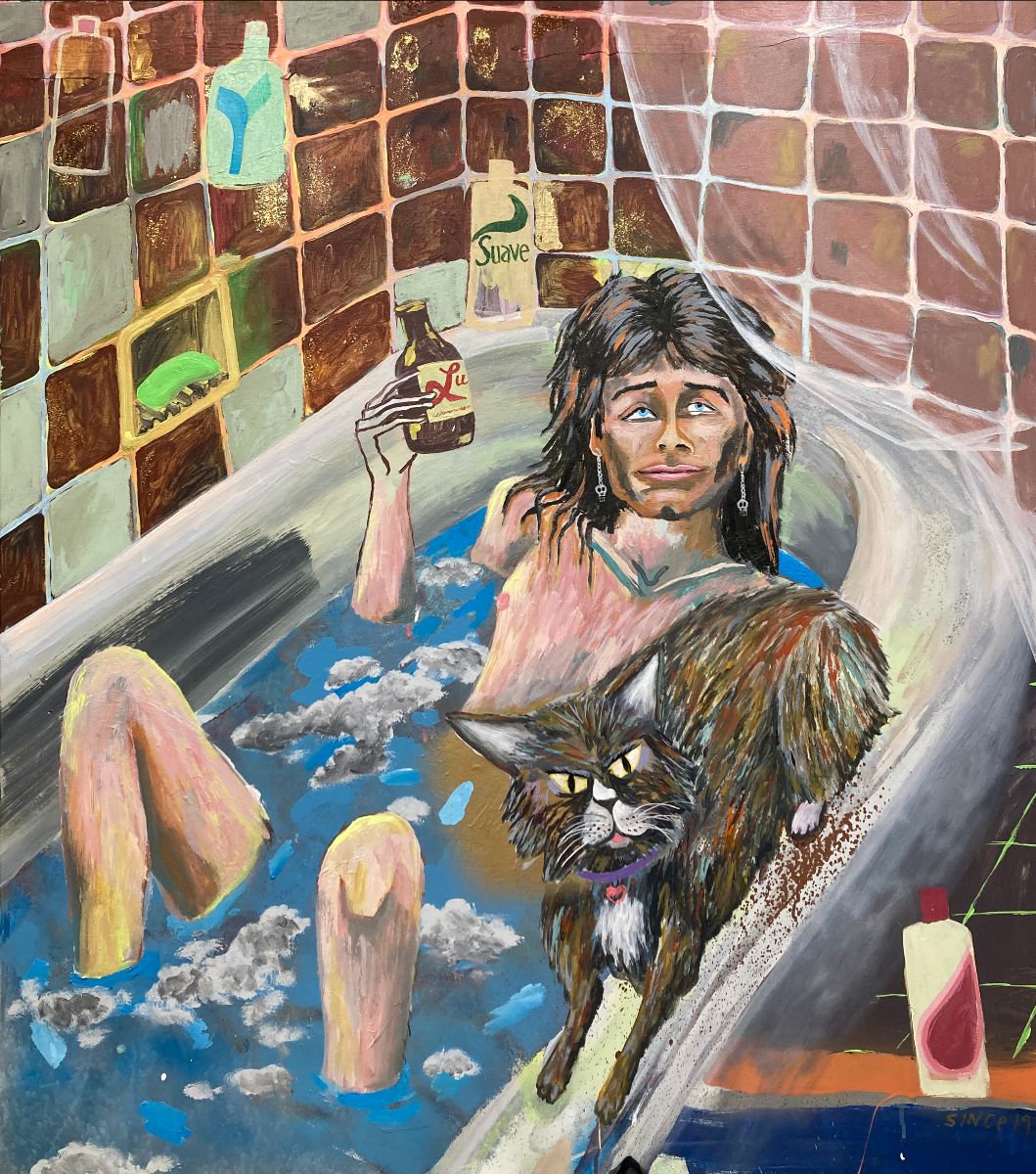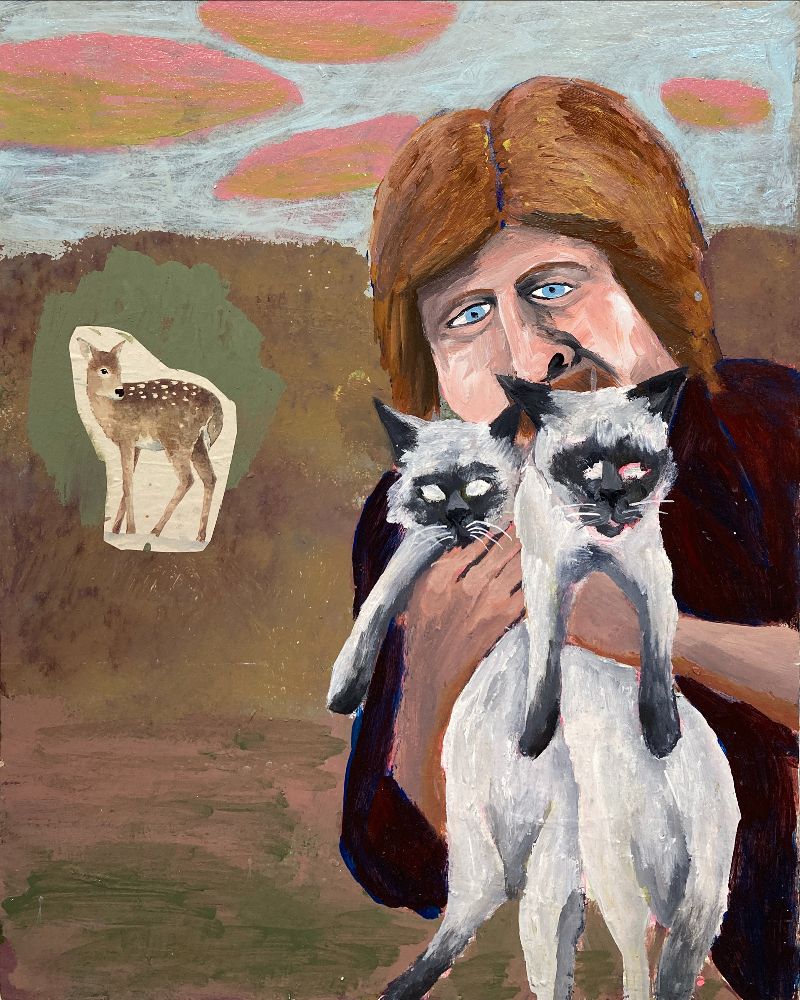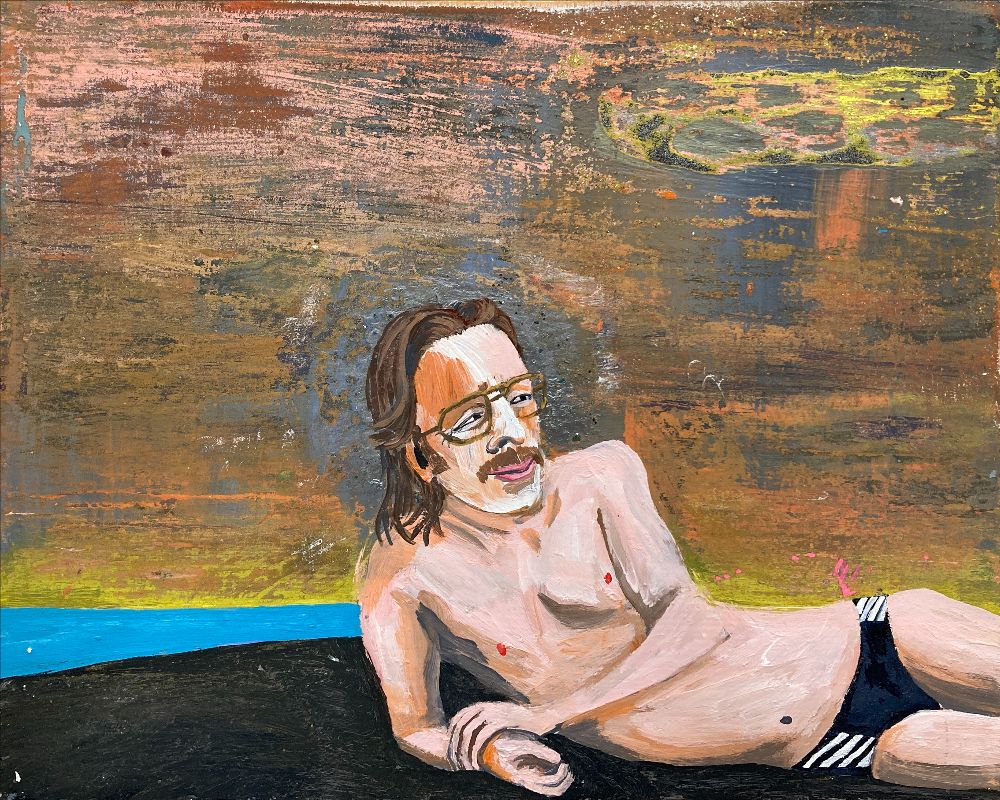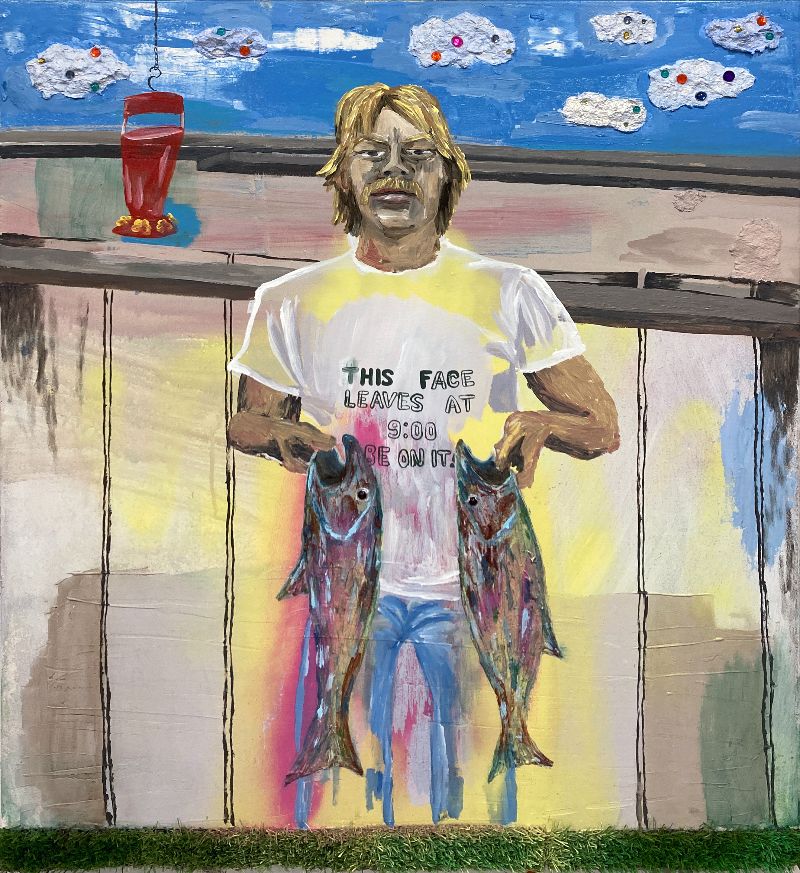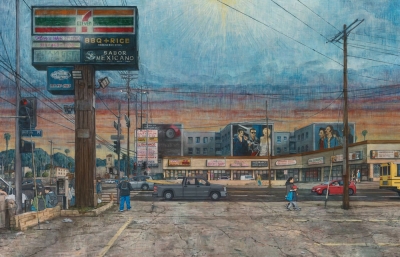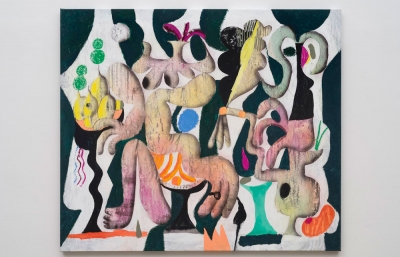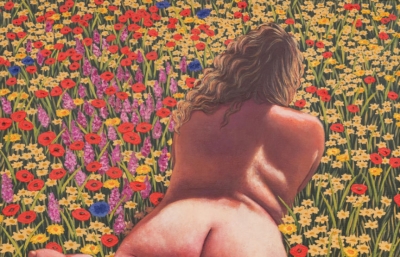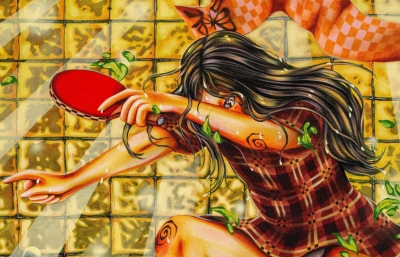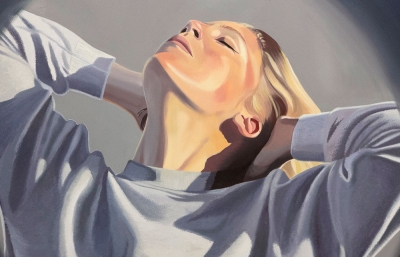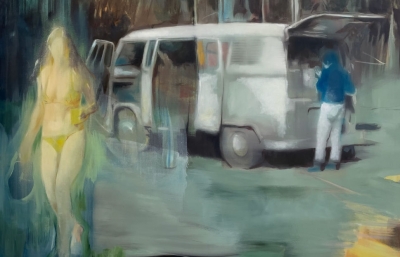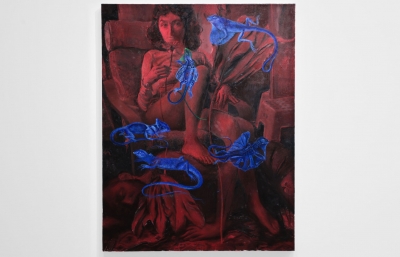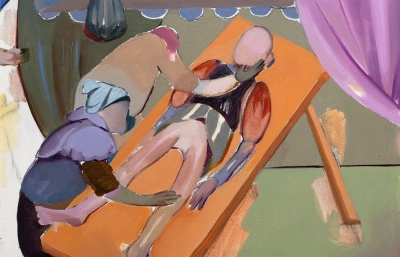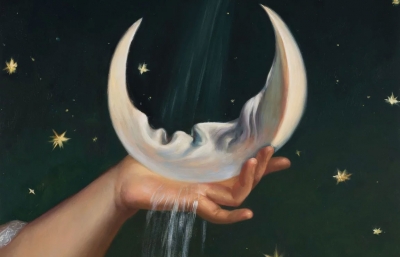An over-the-top quality makes Cate White's paintings endlessly entertaining and intriguingly ironic. Susan Sontag would have characterized this aesthetic sensibility as “camp.” But beyond the playful use of glitter, mica flakes, and plastic flowers lies a tenderness that can be profoundly moving. This is not an accident. It’s a perfect description of the artist herself. One need only watch a few minutes of her YouTube show How Do You Paint to get the charm.
Cate White is a thinker, a reader, and a visual essayist. Before she took up the paintbrush and spray can, she wanted to be a writer. She tells stories through imagery. The tales are as full of philosophical meditation and social commentary, as they are of plot, setting, character, point of view, and conflict.
Her solo show MEN at Small Works SF presents 18 portraits of, in her words, “70s and 80s dudes that are giving a blue-collar, working man vibe.” These retro-refractive compositions work on a lot of levels beyond the pleasure one gets looking at them.
White began this series while reading cultural theorist Mark Fisher, who expanded the meaning of a term first used by French Marxist philosopher Jacques Derrida. For Fisher, hauntology explains our cultural and political stagnation. The pervasive pessimism and consumerism of modern life make us feel that the future has been canceled. Nostalgia becomes the specter haunting any hope in tomorrow or enthusiasm for new ideas.
Ever wonder why Gen Z’ers on TikTok are so obsessed with the “high school aesthetic” and the pre-digital social dynamics of the 30-year-old TV show Friends? Hauntology is your answer. Overwhelmed by the toxicity of current events or the doom loop of climate news, the next generation looks backward not forward for inspiration and comfort.
Are Cate White’s Men emblematic of this phenomenon? If watching Fox News feels like a marathon session of the aversion therapy eye scene in A Clockwork Orange, why not escape to White’s happy scenes. So, yes, the paintings are hauntological. Yet this work feels anything but escapist. It’s courageous, compelling, and convincing. Perhaps White’s dose of masculine energy is antidote, as well as symptom.
Who are Cate’s White’s Men? These are not the slick urban metrosexuals of the aughts decade. These fellas sport t-shirts emblazoned with slogans like “this face leaves at 9:00 be on it” or “it’s not a bald spot but a solar panel for a sex machine.” Offensive? Not really. Sex machine guy’s is “Mike (bald man)” and his closet is literally labeled “closet.” Slogans have been defanged. Postures rendered harmless. Same for the shaggy dudes with hair parted down the middle and bushy mustaches. They come off as sympathetic and vulnerable, especially with birds perched on their heads or deer collaged nearby.
Animals are a big part of this softening effect as is the general state of undress. We find “Man in the Atomic Age (Allen)” is kicking back in stripped briefs. The naked men – “Ricky (tub man)”, “Miguel (robe man)”, “Nature Man”, and the man in “Safe Space” – are accompanied by cats, a frequent icon in White’s work. Nothing demystifies machismo more than a pussy cat stretched across the crotch, the floral bedspread, or tub side.
Beyond pet companions, most of the men appear solo. The exceptions are “Rory and his son”, a vibrant beautiful painting of the two figures sharing time beside a bustling fish tank, and “l-r Darren, Tyrone, Marcus, Andre, Stevie, Daryl, James (group shot)” which depicts a group of friends sharing beers/pops beside an inflatable pool. Their shared joy is infectious. Darren’s t-shirt reads: “Black by Popular Demand”. Stevie, who is white, seems every bit a part of this chosen family. He’s wearing a Spuds MacKenzie original party animal tee. Fun fact: the bull terrier who appeared as Spuds in those super-dudish Bud Light commercials was apparently a female dog nicknamed Evie.
So speaking of gender, the ‘70s were the era of androgyny and glam rock, coming at the tail end of the Peacock Revolution, which saw the blending of feminine details in men’s fashion, as well as elements of fashion from Africa, Asia, and the queer community. Were the men that White grew up with in Mendocino County aware of all this as they went about their days? I’m not sure it matters. Culture is culture.
What is it that matters then? White introduces us to each of these individuals as humans with a story. Some look sensitive, others look cocky. But there is no meanness here at all. These are guys I’d want to hang out with. I can’t say that about many of today’s public figures. Much of current culture is filled with suspicion, anger, and frustration. There’s ample reason for that. The question isn’t whether the good old days were really so amazing. The question is how the hell we find the way forward.
Art does things. It shakes glitter on the soul and fills the mind with neon signs pointing forward. Cate White has guts. She makes me want to believe in and fight for funkier horizons.
MEN at Small Works SF is up and White is doing a walk through on March 1st. Go on by. — Tamsin Smith



